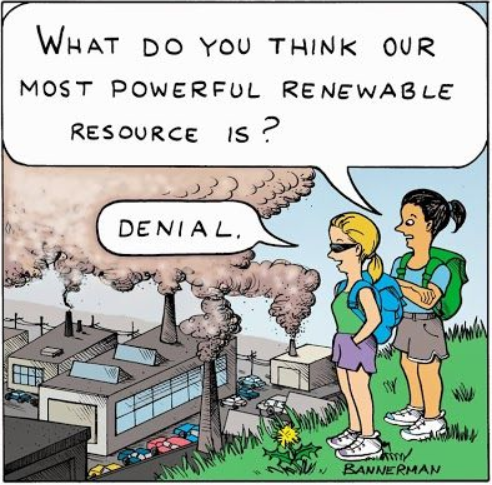At first glance, the renewable build-out is a compelling narrative. I mean who doesn’t want to power the world via wind and solar.
Projections like the below 50 by 50 are easy for the public to support and results in politicians implementing them for votes even if they have to subsidize them heavily.
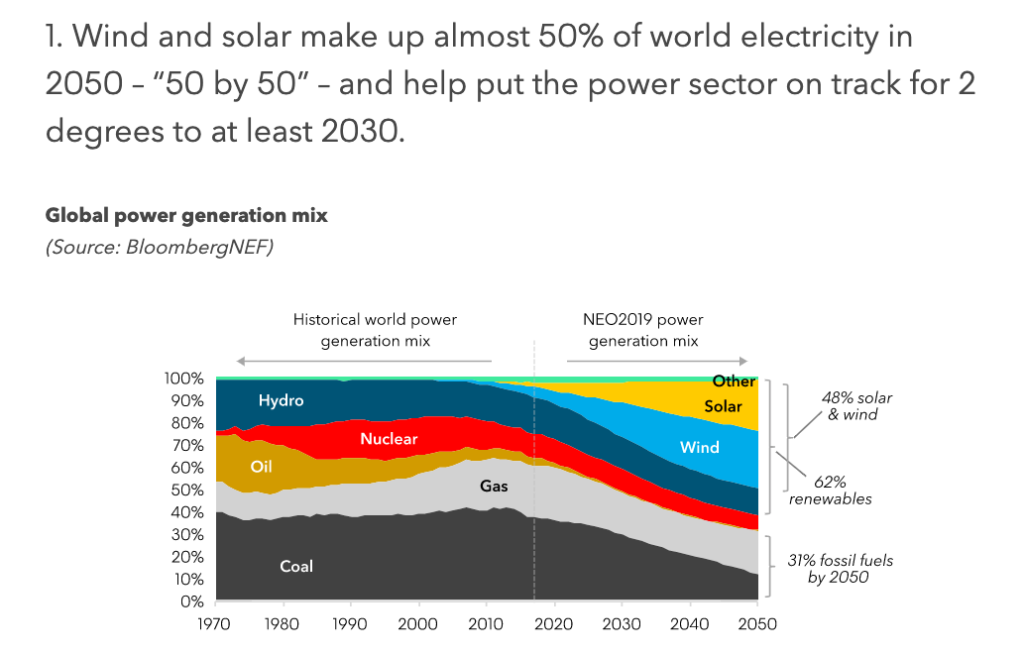
The issue is renewables are being driven by governments globally via incentives and subsidies. While this has worked fine in the short term renewables need to be economically competitive if we are to see the continued investment in them.
And unfortunately, they simply aren’t competitive especially when you take into account their full cost (intermittency requiring storage).
Don’t believe me, just look at year over year renewables investment.
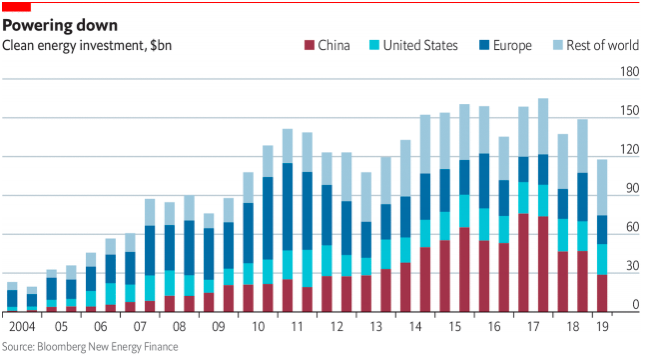
” Last year the Chinese government slashed investment subsidies. This has contributed to a fall of 60% in Chinese investment in renewable energy in the past two years”
This is before I bring up some renewable facts which rarely see the light of day.
Wind power creates radioactive toxic waste
This isn’t even the worst part, as its largely unregulated, unlike nuclear waste.
Take the time to read this for the details: Big winds dirty little secret
Or let me give you the main points of the article;
- “According to the Bulletin of Atomic Sciences, a 2 megawatt (MW) wind turbine contains about 800 pounds of neodymium and 130 pounds of dysprosium”.
- “To quantify this in terms of environmental damages, consider that mining one ton of rare earth minerals produces about one ton of radioactive waste, according to the Institute for the Analysis of Global Security.
- In 2012, the U.S. added a record 13,131 MW of wind generating capacity. That means that between 4.9 million pounds (using MIT’s estimate) and 6.1 million pounds (using the Bulletin of Atomic Science’s estimate) of rare earths were used in wind turbines installed in 2012.
- “For perspective, America’s nuclear industry produces between 4.4 million and 5 million pounds of spent nuclear fuel each year.
- That means the U.S. wind industry may well have created more radioactive waste last year than our entire nuclear industry produced in spent fuel.
- In this sense, the nuclear industry seems to be doing more with less: nuclear energy comprised about 20% of America’s electrical generation in 2012, while wind accounted for 3.5% of all electricity generated in the United States.”
This means wind power creates 6x more radioactive waste in its creation than nuclear (granted nuclear waste is a recurring issue with nuclear waste produced throughout the life of the plant).
The truly scary part of this article is the fact nuclear waste is a highly regulated process, whereas radioactive waste from rare earth metals is literally being dumped in Chinese lakes without a second thought.
Un-recyclable renewables
Poor incentives and no planning for the future means solar isn’t quite as “renewable” as everyone is making out.
The issue is that solar photovoltaic panels, whose operating life is 20 to 30 years, lose productivity over time.
Not to mention that we have absolutely no idea how to dispose of them safely.
“Solar panels create 300 times more toxic waste per unit of energy than do nuclear power plants. If solar and nuclear produce the same amount of electricity over the next 25 years that nuclear produced in 2016, and the wastes are stacked on football fields, the nuclear waste would reach the height of the Leaning Tower of Pisa (53 meters), while the solar waste would reach the height of two Mt. Everest (16 km).”
I highly recommend reading this article if you aren’t familiar with the problem: If Solar Panels are so clean why do they produce so much toxic waste?
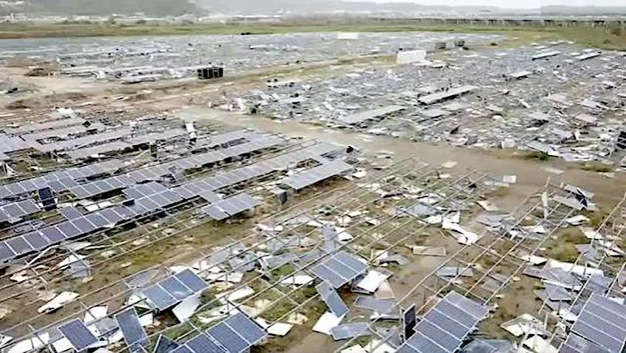
Unfortunately, wind turbines are no better with the blades being extremely tough to recycle. As this article outlines they are taking up entire landfill sites: Wind Turbines Leave Behind Hard-To-Manage Waste
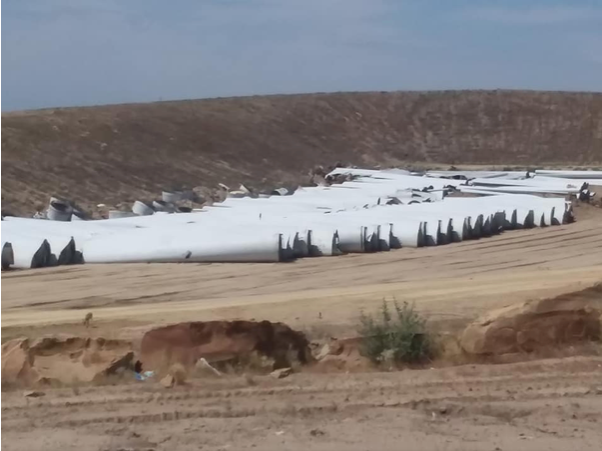
Running a grid on renewables + battery storage is a fairy tale
I’ve summarised the key points from David Wojicks article (Batteries Cannot Make Renewables Reliable) below:
“A smallish wind farm might have a generating capacity of 100 MW, so costing around $150million. Suppose we want to store enough juice to back up the wind farm for just one day when the wind speed is too low to generate any power. Let’s say we simply need 100MW for 24hours or 2400mwh. At $1.5million per MWH that is a whopping $3.6 billion. In short, the battery costs 24 times more than the backed up wind farm costs.”
In reality, a week of storage would be required: “A week has 168 hours so so we need 16,800 MWh of battery storage capacity, at the enormous cost of $25.2 billion, just to make a $150million wind farm reliable.”
“Even if the cost of batteries were to come way down by say 90%, the cost would still be wildly prohibitive.“
These numbers are based on lithium-ion batteries (would love to know the numbers on vanadium redox) which even if they were cost-effective leads us back to the fact these only last ~10years.
Let’s just leave it at the whole thing is pretty silly with the current technology.
So how did we get here?
Two things; narrative and incentives.
- Renewable energy is a nice sounding narrative, I mean which politician or environment-loving person doesn’t want to be all for running the world on wind and sun!
- “Never, ever, think about something else when you should be thinking about the power of incentives.” — Charlie Munger
Some examples of the current incentives;
“In 2016, renewables received 94 times more in U.S. federal subsidies than nuclear and 46 times more than fossil fuels per unit of energy generated.”
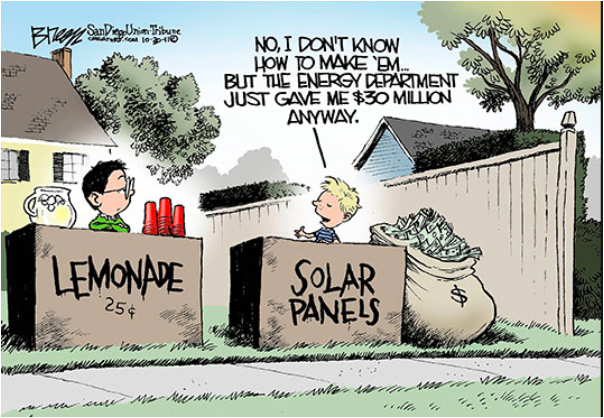
“The PTC (federal production tax credit) is high enough that producers often get paid as much or more per unit of energy in subsidies than the average wholesale price of electricity. Given that wind is a free fuel source, wind energy producers can even produce when the wholesale price is negative, right up to the value of the subsidy.”
An analogy would be;
Bob works at a company where he is paid hourly for fixed hours.
Alan, on the other hand, got a huge sign-on bonus and shows up whenever he feels like it, plus gets double time (paid mostly by Government) whenever he does work.
Company performance has suffered so management decides to fire a few more Bobs and hire more Alans. They also are exploring ways to support Alan with ‘back-up’ when he doesn’t feel like working.
So what’s the take away from all this?
“You can always count on Americans Western Countries to do the right thing – after they’ve tried everything else.”
-Winston Churchill (With a slight alteration by me)
Western economies will increasingly need to accept renewables are an addition to reliable carbon-free baseload power (nuclear), while emerging countries will need to embrace it eventually out of necessity, or face similar pollution problems to China and India.
Following Germany’s expensive lesson (Energiewende) on how renewables can’t replace nuclear and coal, I believe we are going to see more sleight of hand from politicians where they replace “100% renewable” with “100% carbon-free”.
While gas may be the medium-term winner as a ‘bridging technology’ to cover up renewables intermittency, nuclear still seems the logical winner long term. Be it small modular reactors or the new gen4 reactors.
The biggest investment implication of this all is that coal and gas is going to be a far bigger proportion of our energy production for the next 20 years then most projections would have you think.
Cheers,
Ferg
